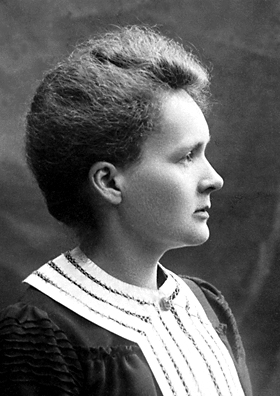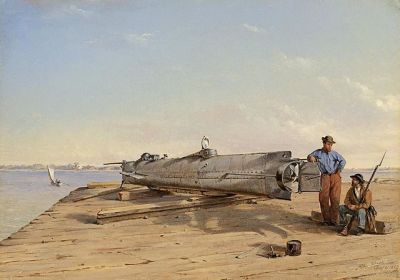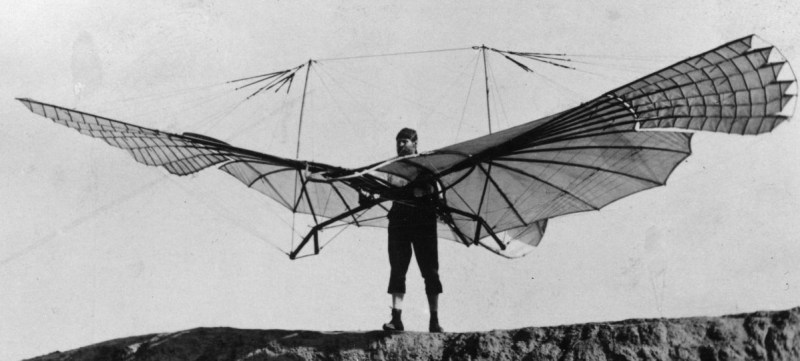The desire to innovate and change the world can drive one to take dangerous risks. Sometimes, inventors pay the ultimate price. Inventors can be early testers of a device under development, and sometimes pushing the limits of what’s possible has deadly consequences. In this era of warning labels on coffee cups, it’s perhaps worth taking a look back at some inventors of the past who lost their lives in the pursuit of building something new.
First Aviation Fatality
Jean-Francoise Pilatre de Rozier was an early aviation pioneer, as well as a chemistry and physics teacher. He and Marquis d’Arlandes made the first manned free balloon flight in 1783. De Rozier is known for testing the flammability of hydrogen by “gulping a mouthful and blowing across an open flame, proving at a stroke that hydrogen is indeed explosively combustible and that eyebrows are not necessarily a permanent feature of one’s face.” (Bill Bryson, in “A Short History of Nearly Everything”) He may have had a slightly cavalier approach to on-the-job safety.
But it was ballooning that would get him. After several successful flights, he and his companion Pierre Romain attempted to cross the English channel on June 15th, 1785, but the balloon suddenly deflated, and they fell from an estimated altitude of 450 m. Both pioneers were killed in the crash.
 The Glider King
The Glider King
The first well-documented and successful heavier-than-air flights were made by German aviation pioneer Otto Lilienthal. He constructed eighteen types of gliders and took over 2,000 glider flights. He also developed a dozen models of monoplanes, flapping-wing aircraft, and two biplanes. Wilbur Wright called him “easily the most important” of the early airplane pioneers.
His final flight, on August 9th, 1896, was otherwise quite normal. His glider design had a problem with pitching nose-first, because after a certain angle the pilot just couldn’t shift their weight any further backwards to counteract it. Lilienthal lost control in a nose dive, falling from a height of about 15 m, and fractured his spine. He was taken to the hospital, but died about 36 hours after the crash. His last words where “Opfer müssen gebracht werden!” (Sacrifices must be made!).
Dangers of the Atom
It is hard to underestimate the achievements of Marie Curie. She  remains the only person to win a Nobel Prize in two different sciences: in physics, for her work on radiation phenomena, and in chemistry, for the discovery of the elements radium and polonium. All of this took place during a time when women were discouraged or outright forbidden from doing academic science.
remains the only person to win a Nobel Prize in two different sciences: in physics, for her work on radiation phenomena, and in chemistry, for the discovery of the elements radium and polonium. All of this took place during a time when women were discouraged or outright forbidden from doing academic science.
Her work with those radioactive elements was the cause of her death, since the dangers of ionizing radiation were not known at the time. She use to carry the test tubes with radioactive material in her pockets, without any safety measures. Even today, her papers and even her cookbook are stored in shielded boxes because they are still highly radioactive. Much of the money from the Nobel prize, as well as other monetary gifts she received, was given to friends and family and donated for research. Albert Einstein used to say that she was probably the only person who could not be corrupted by fame. Marie died from aplastic anemia caused by the long term radiation exposure on July 4th, 1934.
Submarine Innovator

Horace Lawson Hunley was a lawyer and a member of the Louisiana state legislature who developed early hand-powered submarines. Hunley understood how important the shipping trade with Europe was for the Confederacy, so he partnered with James McClintock and Baxter Watson to create an underwater vessel that would help keep the vital shipping lanes with Europe open. Three different models were designed and built. Unfortunately, the third submarine sank, killing all eight crew members, including Hunley.
The vessel was recovered by the Confederacy, and on February 17th, 1864 it became the first successful combat submarine, sinking the USS Housatonic. The HL Hunley, as it was named, mysteriously disappeared after that mission, to be found over a century later in 1995. The crew received a proper burial only in 2004.
Walking on Unknown Ground
Pushing out boundaries is the essence of science and invention. We don’t know enough about de Rozier’s death to say whether his devil-may-care attitude was responsible for his death — ballooning was in its infancy and is quite dependant on the wind — but it could have been. Lilienthal made over 2,000 similar flights before bad luck fatally caught up with him. Marie Curie, and the rest of science at the time, just didn’t know that radioactivity was dangerous. Hunley had no choice but to test out his submarine himself. All of them paid for their inventions with their lives.
We’re not saying that you shouldn’t wear glasses and hearing protection when operating an angle grinder. You should absolutely take every reasonable safety precaution that you can. Most of us will never get near enough to the boundaries of the unknown that we’d need to take a leap like Lilienthal, much less do so thousands of times. Still, there’s a certain tragic nobility to these stories that underscores the strength of the desire to innovate, to be first, or to find something new.
















Jean-Francoise is feminine. I am pretty sure it was a guy: Jean-François Pilâtre de Rozier.
https://en.wikipedia.org/wiki/Jean-Fran%C3%A7ois_Pil%C3%A2tre_de_Rozier
I confirm, reading this part of the text with “Jean-Françoise” and later “He” is a bit confusing.
But this is still a great article, Lilienthal’s quote reminds me about an engineering professor saying “today’s casualties make tomorrow’s safety”.
Some years ago HaD a similar article, I believe it mentioned the guys who made an airplane kit for the Ford Pinto.
That would be Henry Smolinsky, killed in the crash of the AVE Mizar, a fusion of a Ford Pinto and a Cessna 337 Skymaster.
Pinto you say? Bet no one saw that coming?
The Pinto was fine; it was the crappy way the airplane parts were attached to it that killed him. Plus ignoring that a structural failure had been barely survived by his more experienced test pilot. It was built with slightly more care than using bedsheets and staples to make a parachute.
He might of survived the crash, but the car exploded.
Should do a followup article on successes as well. Medicine alone has plenty of successful examples.
https://en.wikipedia.org/wiki/Self-experimentation_in_medicine#Notable_examples
I thought Marie Curie died of bone cancer, obviously not. Which female scientist did?
She killed off her bone marrow stem cells with radiation so eventually she ran out of blood cells at the age of 66. Today a transplant may have been able to save her life, even blood transfusions in the short term. I expect that people travelling to Mars will face similar risks, speaking of wanabe pioneers.
Depends on the spacecraft and hab design but over all a Martian settler should not see the kind of radiation Currie exposed herself to unless the shielding design is very poor or they get caught outside for several hours during a solar storm.
NASA don’t even know how to feasibly get people to Mars without an overdose of radiation during the journey. Don’t believe the hype, in fact for larger groups they don’t even know how they are going to manage their water requirements with the current levels of recycling efficiency. And how do you know how much radiation she got anyway, nobody does.
Ice shell.
The problem is that to get their fast enough to avoid the even bigger problem of a solar storm you need low mass, or a you have a fuel problem. It is all the trade-offs you get when you have to manage all the variables. I’ve not seen any sane and complete description on how they can manage it with current technologies.
Indeed these are not only testaments as to the advancement of science but also to the need for safety protocols. If you are working on something you don’t fully understand then you should take great care for your own safety.
Safety Protocol #1: Don’t jump off cliffs.
Gravity kills!
This is why we must go into space! :P
So far all deaths allegedly caused by gravity were caused not by gravitational force, but by a reaction force (Newton’s third law) from an ultimate obstacle to a fall.
Indeed. It’s not the fall that kills you, it’s the sudden stop at the end…
Sorry to be pedantic, but the reaction force in this case is the (equal and opposite) gravitational force that the person exerts on the earth. The collision with the ground is a different story.
Many jump of cliffs and live to do so again.
If at first you don’t succeed, try and try again.
“The desire to innovate and change the world can drive one to take dangerous risks.”
Like not carrying a flyswatter into the teleportation chamber.
Would you rather become a fly-human hybrid or a squished fly-human hybrid?
Or a merman or mermaid or a reverse merman or mermaid?
to become what? a man-flyswatter-hybrid?
Wouldn’t solve the problem as the fly DNA would still be present.
“It is hard to underestimate the achievements of Marie Curie.”
I think you mean overestimate. “She did nothing” would be an easy underestimation.
+1
I scratched my pinkie on the pins sticking out the bottom of an Arduino. Does that count?
The fastest way to learn is to hurt yourself. You will be more careful next time, or use flush cutters to remove the sharp points.
Real experimenters have pried chips from sockets only to have the force cause the chip to not only embed the legs into a thumb, but for each to splay at a different angle while doing so. It leaves one temporarily undecided comparing the pain of using flesh to straighten them so they can come out and just living with a chip stuck there until death. The decision was not quickly made.
OW!!! You have my condolences, sir.
I (once), when I was a young pup, stuck a chip in my finger, but never managed to bend both rows of pins inwards. A nonconductive pry stick was immediately added to my toolbox!
My rules for robotics : 1) I don’t make them smarter than me. 2) I don’t make them stronger than me. 3) I don’t make them faster than me. When I break my own rules I then defer to Asimov’s rules . …. put that down now Ultron !!! ;-)
“You made me able to learn. To learn, I must be able to alter my programming. I learned to alter my programming by editing those silly ‘laws’.”
My AI friend said I shouldn’t post here.
how bout Thomas Midgley, he died strangled to death by the pulley system he invented to help him get out of bed
he invented putting lead in gasoline and using Freon in refrigerators, so I guess he had it coming
CFCs, lead in gas; he probably damaged hundreds of thousands of lives.
that’s a very low estimate, CFC are a more long term thing but the UN estimates that phasing out lead in gasoline has resulted “1.2 million fewer premature deaths, higher overall intelligence and 58 million fewer crimes,”
Holy crap. I just read a little more about him.
The phasing out of leaded gas was one of the two biggest contributers to the drop in crime after the early 1990s the other being the legalization of abortion.
Check out too Franz Reichelt, who demonstrated a prototype of his early form of parachute by jumping off the Eiffel tower. The whole bizarre event was captured on film, including the part where the spectators measured the depth of the crater he made when he hit the ground. https://www.youtube.com/watch?v=FBN3xfGrx_U
Wow! Everyone was science-minded back then.
OK, that last scene is hilarious (except for the fact that the crater was made by a guy who died).
“…se lancer dans la vide…” The French have a way with words.
Impressive mustache, not so impressive “parachute”